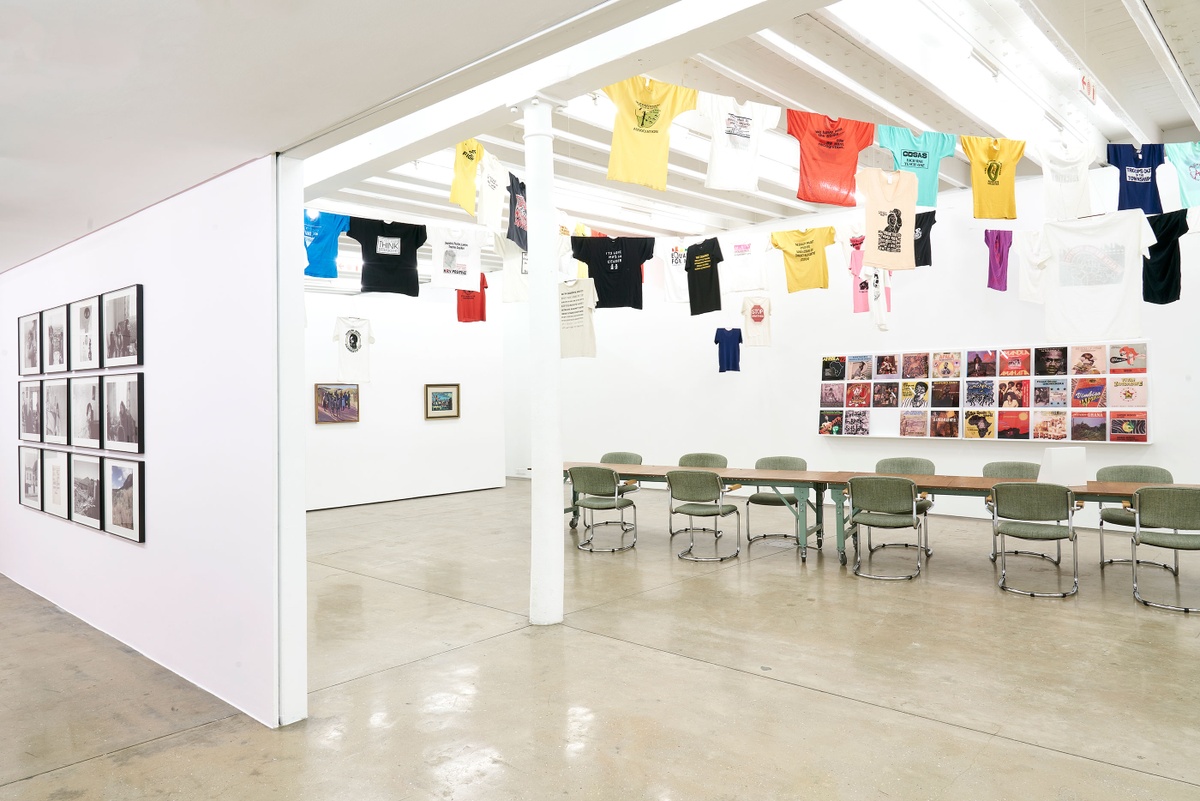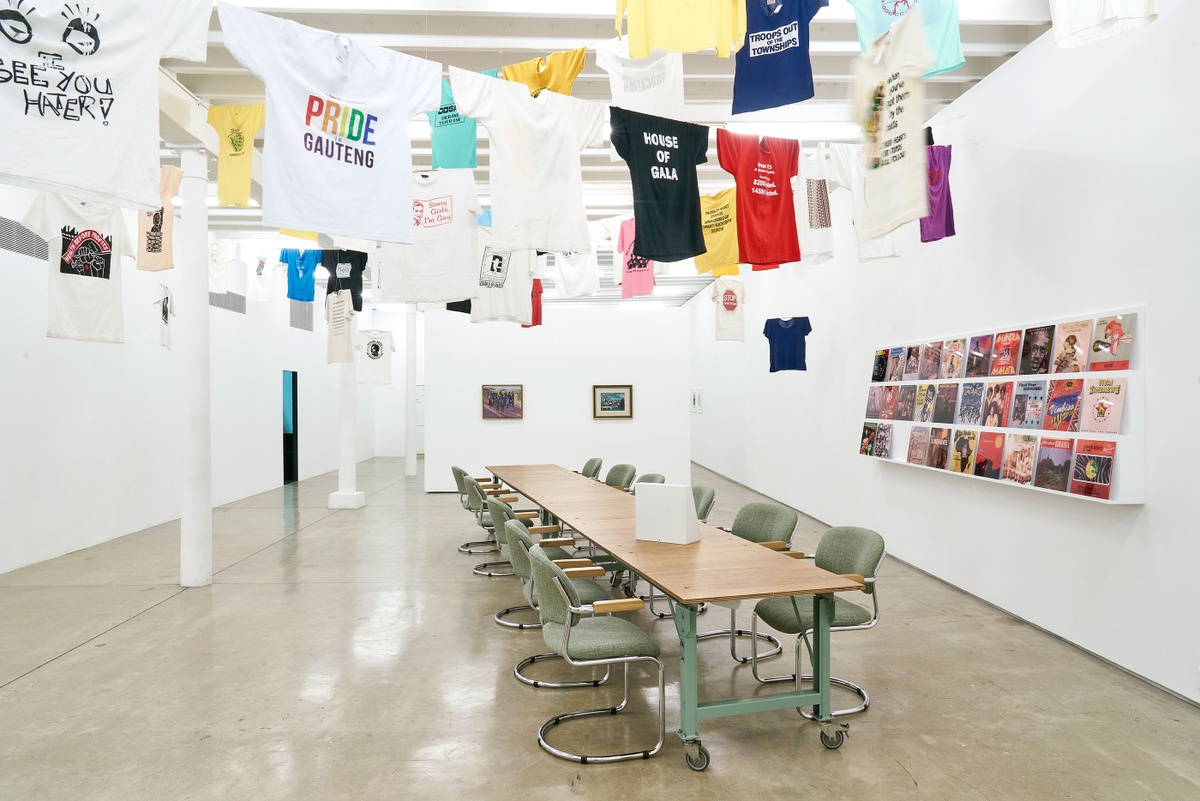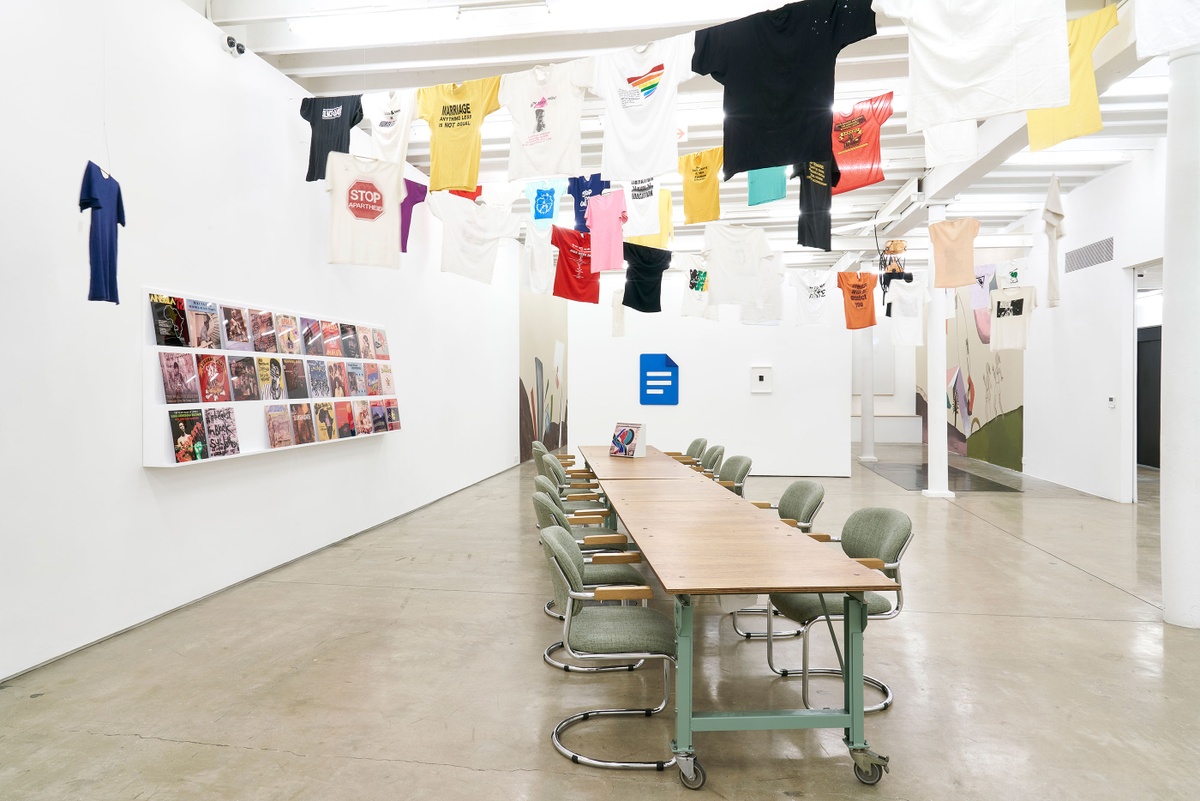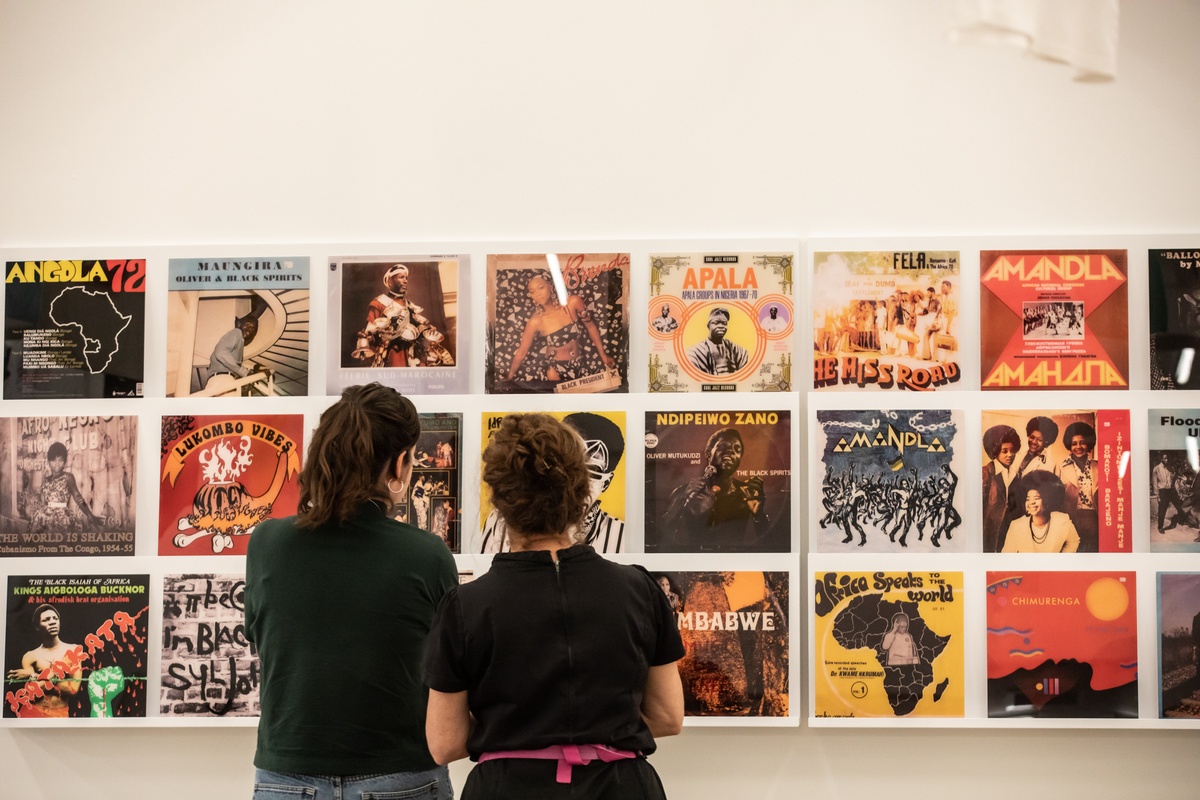Kudzanai Chiurai

The Library of Things We Forget to Remember is at once an archive, art installation, and resource centre for collaborative production. Its accumulated vinyls, posters, paintings and ephemera – collected over several years – attest to pan-African histories, liberation movements, and civil rights struggles as articulated in cultural artefacts, and gestures to shared ambitions for imagined futures. In form, the project is iterative. Each time The Library is exhibited, a new librarian is invited to curate the selection, that they might offer novel understandings of the assembled material, "and so bring to our attention dialogues and ideas forgotten but still very much a part of our present." That libraries can be generative rather than static, and moveable rather than located, is central to Chiurai's proposition of The Library as a "liberated zone"; a site for both established and emergent knowledge, the historical and speculative.
This iteration of The Library of Things We Forget to Remember, included in the exhibition Common at A4, was curated by librarian Samantha Modisenyane and features selections from The Library's sound archive, including popular music, resistance songs, and speeches. For this exhibition, A4 curator Mitchell Gilbert Messina supported his colleague – Common's curator Khanya Mashabela – by digitising the audio contents of each of the 30 records loaned by The Library. The digitisation preserves the patina of use (heard in the crackling of an eroded record) accumulated on the vinyls up until the point that they were loaned to A4. These digital recordings were then shared with The Library, where, at the discretion of the artist Kudzanai Chiurai, other sorts of options for accessing this portion of the sound archive become possible – whether online or for listeners who would otherwise not be able to visit iterations of The Library to interact with the originals. The covers have been printed to perspex, and visitors to this exhibition are encouraged to select from these 'records', placing each against the listening box that Messina developed to play the recorded version of the original. This way, the 'records' on the shelf retain the haptic quality of the original vinyls – they remain things to pick up and play.
b.1981, Harare
In an expansive practice that engages artistic, activist and archival strategies, Kudzanai Chiurai considers the continent and its discontents, and asks after the “paradox of virtue” that has come to characterise many ‘post-liberation’ African governments. “I think this has been the fundamental idea, that we are in fact living in post-colonial societies,” Chiurai says. “I doubt that we are in that situation at all. For me, we live in colonial futures. This is what we are grappling with.” His commentary finds form in theatrical photographic and video works, expressionistic paintings, and prints that riff on the declarative language and symbols of political posters. The artist’s criticisms, however, have not been without their price. In 2008, Chiurai was cast an enemy of Mugabe’s government. For a period, he left Zimbabwe for South Africa following repeated threats. This experience, rather than dissuade him, only galvanised his efforts. Mechanisms of political dissent and submission, the corrupting effect of power and the legacy of imperialism remain his guiding themes. “If we could write our history and chart our futures as we please,” Chiurai asks, “who would we be?”





